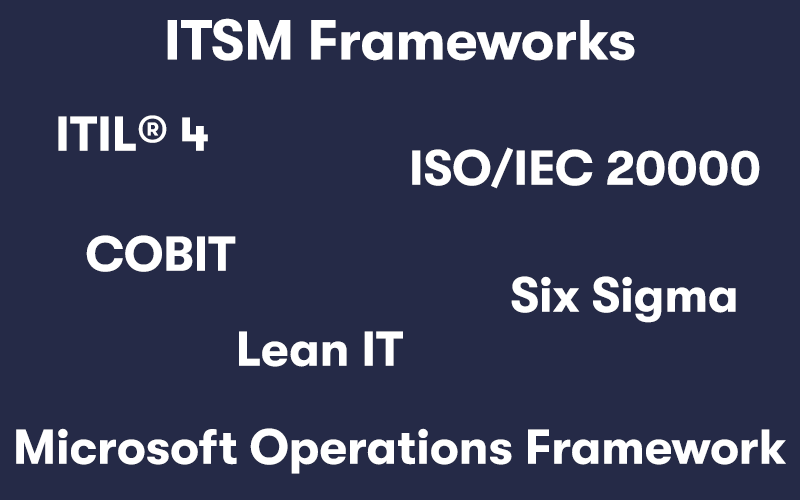What are ITSM Frameworks?
In the ever-evolving landscape of information technology, the alignment of IT services with business strategies has become paramount. This alignment is facilitated by Information Technology Service Management (ITSM) frameworks, structured guidelines that enable organisations to deliver and manage IT services effectively.
These frameworks are not just about technology; they encompass a holistic approach to IT management, focusing on processes, people, and strategies to ensure that IT services support business objectives. Among the myriad ITSM frameworks available, each offers unique best practices, principles, and processes tailored to various business needs.
This article delves into the essence of ITSM frameworks, shedding light on their significance, common types, and the advantages they bring to organisations navigating the complexities of modern IT service delivery.
What are ITSM Frameworks?
ITSM frameworks provide a structured approach to managing IT services, ensuring they meet the needs of the business and its customers. These frameworks offer best practices, guidelines, and principles to help organisations manage their IT services more effectively and efficiently. Some common ITSM frameworks and methodologies are:
- ITIL® 4
- COBIT
- ISO/IEC 20000
- Microsoft Operations Framework
- Six Sigma
- Lean IT
These frameworks are not mutually exclusive and can be integrated or adapted based on an organisation's specific needs, size, and goals. The choice of ITSM framework depends on various factors, including the organisation's existing processes, industry standards, and the specific outcomes they wish to achieve through IT service management.
What is ITSM (Information Technology Service Management)?
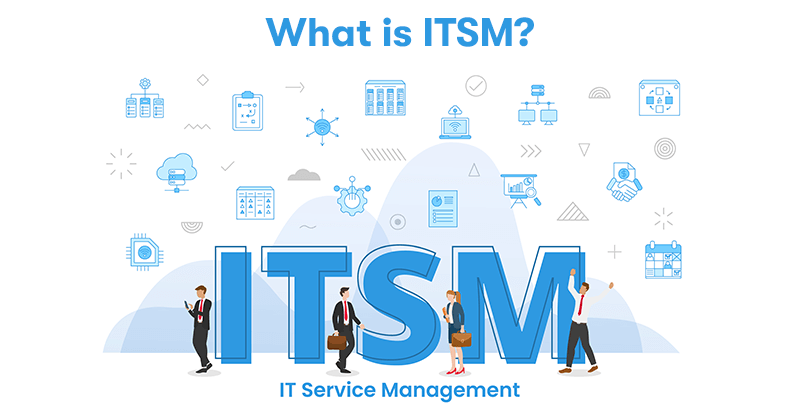
Information Technology Service Management is a discipline that focuses on designing, delivering, managing, and improving the way information technology (IT) is used within an organisation. ITSM aims to ensure that IT services are aligned with the business's needs and goals, providing maximum value to the business through effective and efficient IT service delivery and support.
ITSM is often guided by frameworks and standards which provide a structured approach and best practices for managing IT services. These frameworks help organisations manage risk, strengthen customer relations, establish cost-effective practices, and build a stable IT environment that allows for growth, scale, and change.
By adopting ITSM principles, organisations can ensure that their IT services are aligned with their business objectives, are delivered cost-effectively and timely, and are continuously improved to meet changing business needs.
What are Common ITSM Frameworks?
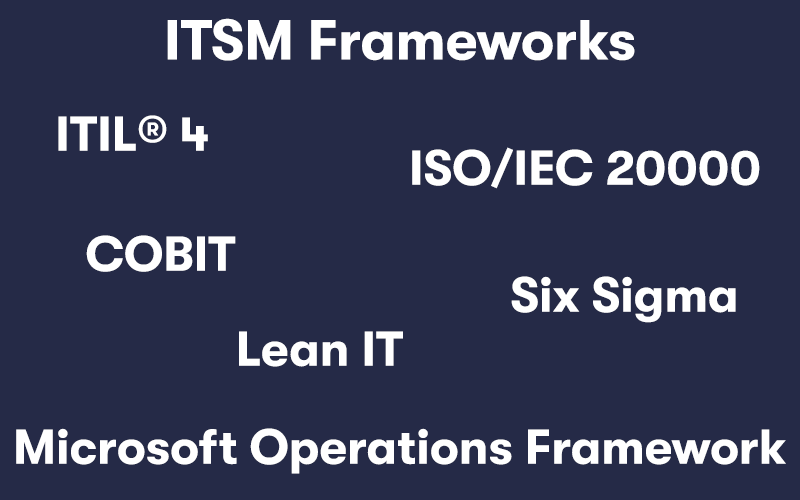
Common ITSM frameworks provide structured guidance to organisations on effectively managing and delivering IT services. These frameworks are designed to ensure IT services align with business objectives, improve service quality, and enhance customer satisfaction. Here are some of the most widely recognised ITSM frameworks:
ITIL®4
Overview: ITIL is one of the most popular and comprehensive frameworks for ITSM. It provides a set of detailed practices for IT service management that focus on aligning IT services with the needs of the business.
Key Features: ITIL covers a wide range of ITSM processes and functions, organised into five main publications: Service Strategy, Service Design, Service Transition, Service Operation, and Continual Service Improvement.
COBIT
Overview: COBIT is a framework for IT governance and management. It is designed to help organisations create optimal IT value by balancing realising benefits and optimising risk levels and resource use.
Key Features: COBIT provides guidelines and best practices for IT governance and management, focusing on aligning IT goals with business objectives and managing IT investments, risks, and resources effectively.
ISO/IEC 20000
Overview: ISO/IEC 20000 is the international standard for IT service management. It specifies requirements for an organisation to establish, implement, maintain, and continually improve a service management system (SMS).
Key Features: The standard focuses on integrating ITSM processes into the business strategy, emphasising the importance of continual improvement. It is often used by organisations seeking to certify their ITSM practices.
MOF (Microsoft Operations Framework)
Overview: MOF is a framework that provides comprehensive guidance for IT service management based on ITIL principles but tailored to integrate with Microsoft technologies.
Key Features: MOF includes practical guidance across the entire IT lifecycle, focusing on the reliability, availability, supportability, and manageability of IT services.
Six Sigma
Overview: Although Six Sigma is not an ITSM framework per se, it is often applied within the context of ITSM. Six Sigma is a set of techniques and tools for process improvement, focusing on quality management.
Key Features: In ITSM, Six Sigma can reduce errors, improve service delivery times, and enhance customer satisfaction by systematically removing defects and variability in IT processes.
Lean IT
Overview: Lean IT is an extension of lean manufacturing principles applied to the IT service management context. It focuses on creating more value for customers with fewer resources by eliminating waste.
Key Features: Lean IT improves customer satisfaction, reduces cycle times, and increases productivity and employee morale by streamlining IT processes.
These frameworks are not mutually exclusive and can be used in combination to address various aspects of IT service management. Organisations typically select and adapt elements from one or more frameworks to fit their specific needs, culture, and maturity level.
What are Common Uses for ITSM Frameworks?
ITSM frameworks are utilised across various organisational functions related to IT services. These frameworks help ensure that IT operations are aligned with overall business goals, providing a structured approach to service management that improves efficiency, reliability, and service quality. Common uses for ITSM frameworks include:
Service Delivery and Management
Enhancing the quality of IT services provided to customers.
Ensuring that IT services are delivered in a timely, reliable, and cost-effective manner.
Managing the end-to-end lifecycle of IT services, from conceptualisation and design to retirement.
Incident and Problem Management
Quickly restoring services after an incident.
Minimising the impact of incidents and problems on business operations.
Identifying and resolving the root causes of recurring incidents to prevent future occurrences.
Change and Release Management
Managing changes to IT services and infrastructure in a controlled manner to minimise risk and disruption.
Ensuring that changes are thoroughly tested and that there is a plan for rollback in case of issues.
Coordinating the release and deployment of changes into the live environment.
Configuration and Asset Management
Maintaining information about IT assets and configurations to support other service management processes.
Ensuring compliance with legal and regulatory requirements regarding IT assets.
Optimising the use of assets and reducing costs by avoiding unnecessary asset purchases.
Service Level Management
Establishing clear service level agreements (SLAs) with customers to define expected service levels.
Monitor and report on service performance to ensure SLAs are met.
Working with customers to understand their needs and ensure that the IT service portfolio meets these needs.
Continual Service Improvement
Implementing a culture of continuous improvement within IT operations.
Using metrics and feedback to identify areas for improvement in IT services.
Ensuring that IT services evolve to meet changing business needs and technologies.
IT Governance and Compliance
Aligning IT strategy with business strategy ensures that IT delivers value to the business.
Ensuring IT operates in a compliant and secure manner, adhering to legal, regulatory, and policy requirements.
Managing IT risks effectively.
Capacity and Performance Management
Ensuring that IT resources are used efficiently and are capable of meeting current and future demand.
Monitor and analyse IT service performance and capacity to identify trends and predict future performance issues.
Knowledge Management
Capturing, sharing, and effectively using knowledge within the IT organisation to improve decision-making and reduce redundant work.
Facilitating quicker problem resolution through the use of documented knowledge and experiences.
ITSM frameworks can be applied to organisations of all sizes and in various sectors, helping to create more efficient, agile, and customer-focused IT departments. By adopting ITSM best practices, organisations can improve their IT service delivery and support, enhance customer satisfaction, and drive business value.
What are the Advantages of ITSM Frameworks?
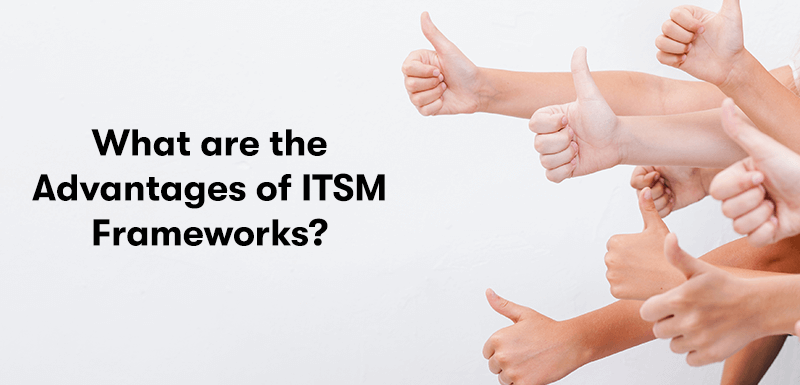
Implementing ITSM frameworks offers organisations numerous advantages, helping them manage and deliver IT services more effectively and efficiently. These frameworks provide structured guidance and best practices that can lead to improved IT service quality, higher customer satisfaction, and better alignment between IT operations and business objectives. Here are some key advantages of using ITSM frameworks:
Improved Service Quality
ITSM frameworks help organisations adopt proven best practices for IT service management, leading to more reliable and higher quality IT services. This improvement in service quality can significantly enhance user and customer satisfaction.
Enhanced Customer Satisfaction
By focusing on delivering services that meet customers' needs and expectations, ITSM frameworks ensure that IT operations are closely aligned with business objectives, leading to increased customer satisfaction.
Increased Efficiency and Productivity
ITSM frameworks streamline processes through standardisation, leading to reduced redundancies and inefficiencies. This standardisation improves productivity and helps reduce costs associated with service delivery.
Better Risk Management
Through the implementation of standardised processes and best practices, ITSM frameworks help organisations identify, assess, and manage IT-related risks more effectively.
Enhanced Agility and Flexibility
ITSM frameworks support the continuous improvement of IT services and processes, enabling organisations to be more agile and flexible in responding to changing business requirements and technological advancements.
Clearer Visibility and Control
By establishing clear processes and guidelines, ITSM frameworks provide organisations with better visibility and control over their IT services and infrastructure, facilitating more informed decision-making and strategic planning.
Improved Compliance and Security
Implementing ITSM frameworks can help ensure that IT services are compliant with relevant laws, regulations, and standards. This can significantly reduce legal and security risks.
Optimised Resource Utilisation
ITSM frameworks help in the optimal allocation and utilisation of IT resources (people, processes, and technology), ensuring that these resources are used effectively to deliver maximum value to the business.
Facilitated Knowledge Management
Many ITSM frameworks emphasise the importance of knowledge management as a tool for improving decision-making and reducing recurring issues. This creates a culture where knowledge is systematically captured, shared, and utilised.
Support for Digital Transformation
ITSM frameworks can support organisations in their digital transformation efforts by providing a structured approach to managing the lifecycle of digital services, from development through to operation and continual improvement.
Adopting ITSM frameworks like ITIL, COBIT, or ISO/IEC 20000 enables organisations to deliver IT services that are more aligned with business goals, are of higher quality, and are more cost-effective. This strategic approach to IT service management is crucial in today's digital and fast-paced business environments.
What is ITIL, and How Does it Relate to ITSM?
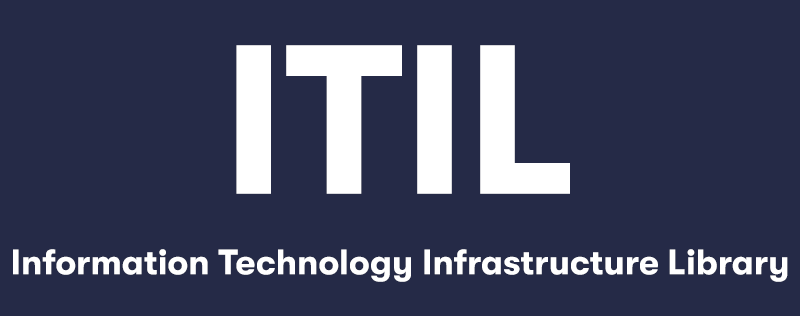
ITIL 4 is one of the most widely adopted IT Service Management frameworks globally. Released in 2019, ITIL 4 provides a comprehensive, practical, and flexible basis for managing IT-enabled services. It builds on the established core of best practices in the ITIL guidance, adapting to the new technologies and challenges of the modern digital world.
ITIL 4 maintains the focus on aligning IT services with the needs of businesses and integrating IT into overall business strategy. Still, it also introduces several new concepts and updates to reflect the latest trends in software development, IT operations, and service management. Here are some key aspects of ITIL 4 and how it relates to ITSM:
Service Value System (SVS)
ITIL 4 introduces the concept of a Service Value System (SVS), which provides a holistic view of how every component and activity of the organisation contributes to value creation. The SVS includes the ITIL service value chain, guiding principles, governance, practices, and continual improvement. It emphasises the importance of creating, delivering, and continuously improving services that provide value to customers and stakeholders.
Four Dimensions of Service Management
ITIL 4 outlines four dimensions that are critical to the effective and efficient facilitation of value for customers and other stakeholders in the form of products and services. These dimensions are:
- Organisations and People
- Information and Technology
- Partners and Suppliers
- Value Streams and Processes
These dimensions ensure a holistic approach to service management, considering factors impacting IT service delivery and management.
Guiding Principles
ITIL 4 introduces seven guiding principles that provide a universal and enduring set of guidelines for an organisation to follow in all circumstances, regardless of changes in its goals, strategies, type of work, or management structure. These principles include focusing on value, starting where you are, progressing iteratively with feedback, collaborating and promoting visibility, thinking and working holistically, keeping it simple and practical, and optimising and automating.
Practices
ITIL 4 transitions from the concept of "processes" used in ITIL V3 to a more comprehensive and flexible concept of "practices." ITIL 4 identifies 34 practices, which are organisational resources designed for performing work or accomplishing an objective. These practices are grouped into three categories: general management practices, service management practices, and technical management practices.
Relationship to ITSM
ITIL 4 is fundamentally about ITSM, providing a robust framework organisations can adopt and adapt to manage IT services effectively. It supports organisations in navigating the complexities of the modern digital environment, including cloud computing, Agile, DevOps, and digital transformation. ITIL 4's flexible, non-prescriptive approach allows it to be compatible with other methodologies and frameworks, enhancing its applicability across various business environments and industries.
By implementing ITIL 4, organisations can improve their ITSM processes, leading to increased efficiency, better risk management, enhanced customer satisfaction, and, ultimately, greater value delivery to the business and its customers.
Where Can You Learn More About ITSM and ITIL4?
ITIL4 is the most widely recognised framework for IT-enabled services in the world. It supports organisations and individuals in gaining optimal value from IT and digital services. It helps define the direction of the service provider with a clear capability model and aligns them to the business strategy and customer needs.
ITIL4 provides comprehensive, practical, and proven guidance for establishing a service management system. It also provides a common language for businesses using IT-enabled services.
Click here for our ITIL 4 Training courses.
To learn more about ITSM, we have many ITSM blogs covering a wide variety of topics. We also offer a range of IT service management courses.
Final Notes on ITSM Frameworks
In conclusion, our exploration of ITSM frameworks, particularly through the lens of ITIL 4, highlights the critical role these frameworks play in aligning IT services with business objectives, ensuring high-quality service delivery, and enhancing overall customer satisfaction.
ITIL 4, with its introduction of the Service Value System, guiding principles, and a shift towards a more holistic view of service management through practices, offers organisations a flexible and comprehensive approach to ITSM.
By adopting ITSM frameworks like ITIL 4, businesses can navigate the complexities of the digital landscape more effectively, optimising resources and fostering continual improvement. Embracing ITSM principles is essential for organisations seeking to deliver value-driven IT services in today's fast-evolving technological environment.


